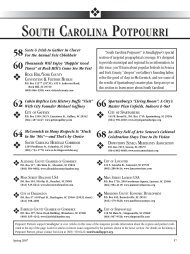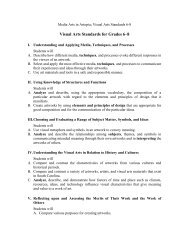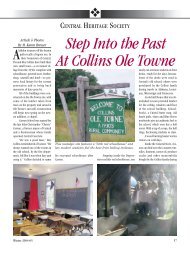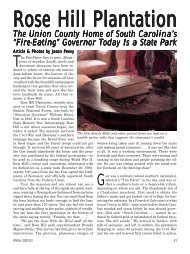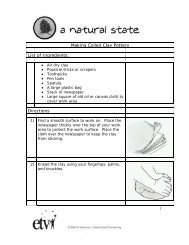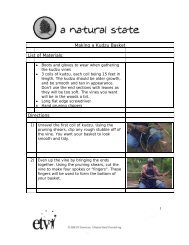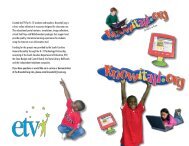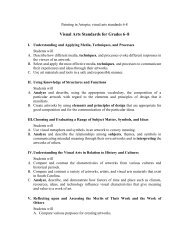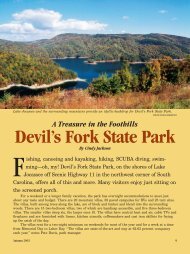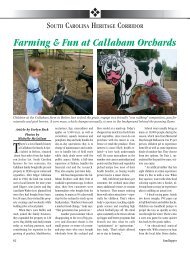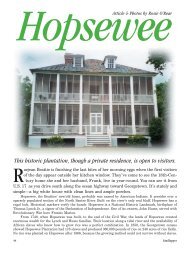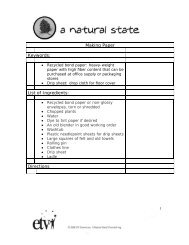The Case Of The Physical Fitness Challenge - Knowitall.org
The Case Of The Physical Fitness Challenge - Knowitall.org
The Case Of The Physical Fitness Challenge - Knowitall.org
You also want an ePaper? Increase the reach of your titles
YUMPU automatically turns print PDFs into web optimized ePapers that Google loves.
Stress This*<br />
18. In your science journal, describe what happened over the course of the entire experiment.<br />
19. Graph your results over the 2-week period.<br />
20. Compare the results of the boys and girls in your class. Discuss any similarities and/or differences.<br />
Discussion<br />
1. Compare the number of clicks on the first day to the number of clicks after 2 weeks. Describe any pattern.<br />
2. How did your results compare with your predictions?<br />
3. What does this activity tell you about physical stress and the body?<br />
4. Was there a difference between the boys and girls? Why or why not?<br />
Extension<br />
2005–2006 NASA SCI Files Series<br />
http://scifiles.larc.nasa.gov<br />
Based on what you learned from this activity about muscle strength and endurance, do the following activities:<br />
1. Time yourself as you write your full name 10 times. Time yourself again as you write your full name 10 times<br />
backwards. Record the time it took you for both trials in your science journal. Why do you think there was<br />
a difference in the two times? Practice writing your name backwards several times over the next few days.<br />
What happens to the time needed to write your name? Explain any differences between times.<br />
2. In a large, open space, stand with your feet flat on the ground. Long jump as far as you can. Measure the<br />
distance you jumped and record it in your science journal. Repeat this activity 3–5 times. What happens to<br />
the distance you are able to jump? Practice this jump every other day for a week. Now record the distance<br />
you are able to jump. Explain any differences in jumps.<br />
3. Time yourself as you stand on one foot. Stop the timer when you can no longer hold your leg up. Record<br />
the time in your science journal. Repeat this activity several times. What happens to the length of time you<br />
are able to stand on one foot? Why?<br />
Stress This Table<br />
Date Trial 1<br />
Prediction Actual<br />
Trial 2<br />
Prediction Actual<br />
Trail 3<br />
Prediction Actual<br />
Dom Non Dom Non Dom Non Dom Non Dom Non Dom Non<br />
(In the table, Non stands for nondominant and Dom refers to dominant.)<br />
* This hands-on activity was adapted from activities in From Outer Space to Inner Space/Muscles and Bones: Activities<br />
Guide for Teachers created by Baylor College of Medicine for the national Space Biomedical research Institute<br />
under nASA Cooperative Agreement nCC 9-58. <strong>The</strong> activities are used with permission of Baylor. All rights<br />
reserved. For additional activities visit http://www.nsbri.<strong>org</strong>/Education/Elem_Act.html<br />
Segment 1<br />
EG-2005-10-09-LARC <strong>The</strong> <strong>Case</strong> of the <strong>Physical</strong> <strong>Fitness</strong> <strong>Challenge</strong><br />
2



